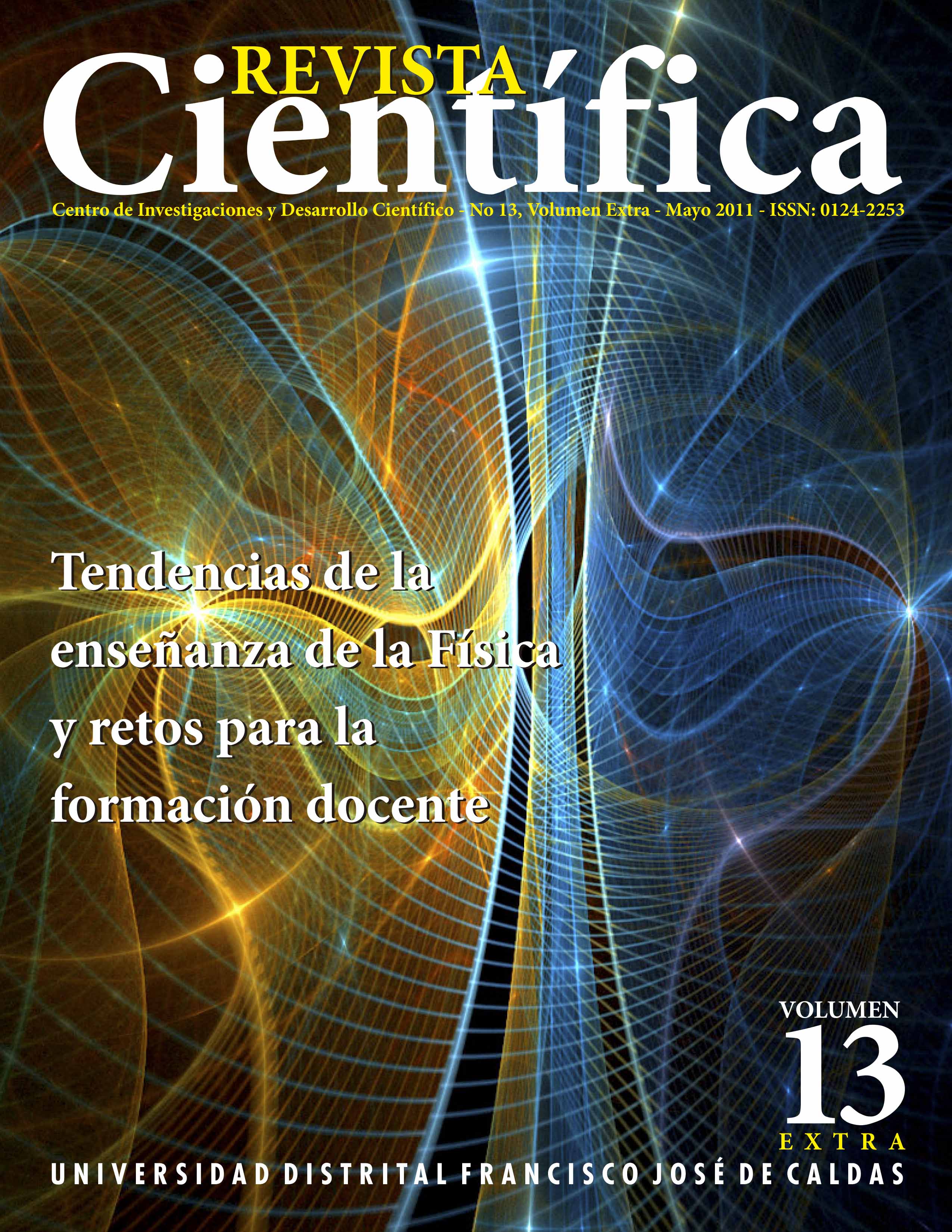DOI:
https://doi.org/10.14483/23448350.811Published:
08/25/2011Issue:
Vol. 13 No. 1 (2011): January-June 2011Section:
Historia y filosofía en la enseñanza de la físicaRelación maestro-estudiante en la resolución de problemas de movimiento: una visión epistemológica de los conceptos de posición, velocidad y aceleración
TEACHER-STUDENT RELATIONSHIP PROBLEM RESOLUTION MOTION: AN EPISTEMOLOGICAL VIEW OF THE CONCEPTS OF POSITION, VELOCITY AND ACCELERATION
Keywords:
Problem solving, teaching strategies, theories of meaning, reference, sense, position, velocity and acceleration (en).Keywords:
Resolución de problemas, Estrategia Didáctica, Teoría del Significado, Referente, Sentido posición, velocidad y aceleración (es).Downloads
Abstract (es)
La relación maestro estudiante en la resolución de problemas como estrategia didáctica está marcada por las relaciones que muestran estudiantes y docentes en el uso de los conceptos fundamentales para el estudio del movimiento, lo que implica una raíz epistemológica. Además, desde la caracterización de una tipología de conceptos en la física a partir de criterios epistemológicos que varían según las corrientes filosóficas y a través de un método con carácter hermenéutico (Destilar la información) es posible generar campos semánticos que en contraste con las nociones de concepto planteadas por Bunge (1985), permiten vislumbrar la relaciones entre docentes y estudiantes en términos de la apropiación de conceptos del movimiento en el contexto de la formación de profesionales de la ingeniería.Abstract (en)
The student teacher relationship in problem solving as teaching strategy is marked by the relationships that show students and teachers in the use of key concepts for the study of motion, which implies an epistemological root. In addition, the characterization of a typology of concepts in physics from epistemological criteria that vary according to philosophical and through a hermeneutic method basis (Distil information) semantic fields can be generated in contrast to the notions of concept raised by Bunge (1985),a glimpseinto the relationships between teachers and students in terms of the appropriation ofconcepts of movement in the context of professional training in engineering.References
BUNGE, M. Epistemología. Barcelona: Ariel, 1985.
BUNGE, M. La Investigación Científica. Barcelona: Ariel, 1976.
CAMPANARIO, JUAN M. Y MOYA AIDA. (1999) ¿Cómo Enseñar Ciencias? Principales Tendencias y Propuestas. Enseñanza de las Ciencias, 17 (2) 179 -192
CARCAVILLA C. ARTURO, ESCUDERO E, TOMÁS (2004). Los Conceptos en la Resolución de Problemas de Física «Bien Estructurados»: Aspectos Identificativos Y Aspectos Formales. Enseñanza de las Ciencias 22 (2) 213-228
CUDMANI LEONOR (1998). La Resolución de Problemas en el Aula. Revista Brasileira de Ensino de Física Vol 20. No. 1, P 75 – 85.
CUDMANI L, SALINAS J, PESA M. (2008). La Evolución de los Significados de dos Conceptos Científicos en Relación con la Estructura Cognitiva de los Estudiantes. Ciência & Educação, v. 14, n. 3, p. 365-80
GIL PÉREZ, DANIEL. (1988). La Resolución de Problemas de Lápiz y Papel como actividad de investigación. Investigación en la Escuela. n. 6 p. 3-19
LUCERO, I. CONCARI, S. POZO, R. (2006) El análisis cualitativo en la resolución de problemas de física y su influencia en el aprendizaje significativo. Investigación en Enseñanza de las Ciencias. Vol. 11 p 85-96
POZO J. I. (1994) La Solución de Problemas, Santillana. Madrid.
How to Cite
APA
ACM
ACS
ABNT
Chicago
Harvard
IEEE
MLA
Turabian
Vancouver
Download Citation
License
When submitting their article to the Scientific Journal, the author(s) certifies that their manuscript has not been, nor will it be, presented or published in any other scientific journal.
Within the editorial policies established for the Scientific Journal, costs are not established at any stage of the editorial process, the submission of articles, the editing, publication and subsequent downloading of the contents is free of charge, since the journal is a non-profit academic publication. profit.




